Jack Eidt writes on the California wildfires and their dangerous connection with climate change, melting of Arctic sea ice, and the drying out of the US West Coast. We must reduce our dependency on fossil fuels, get cracking on a just transition to an economy based on clean, efficient, renewable energy, and start making our homes and lives more extreme-climate-resilient.
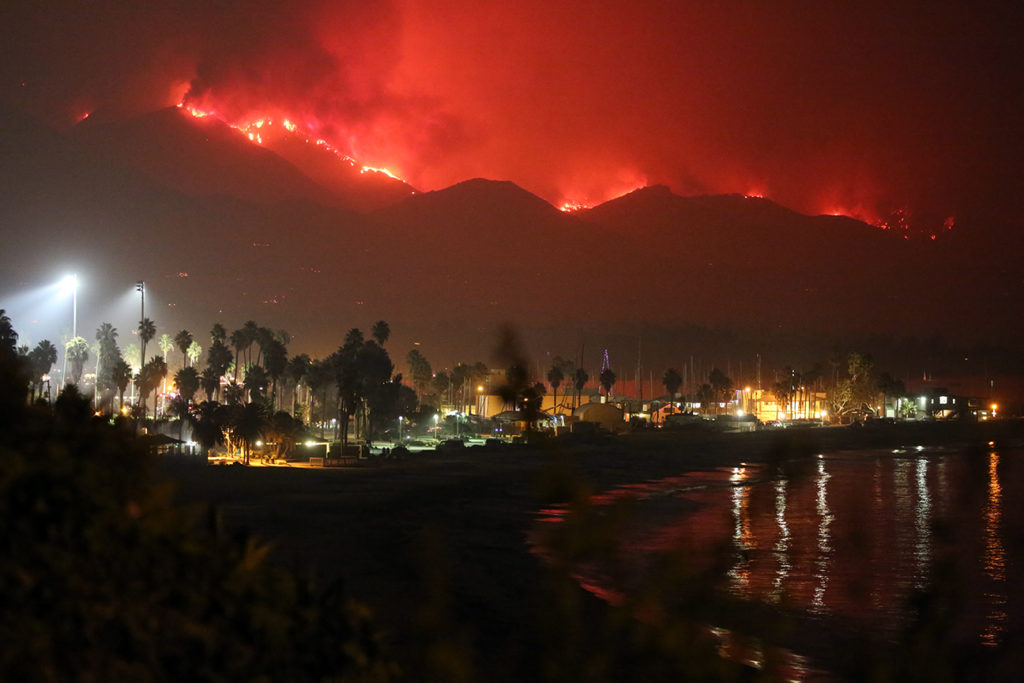

The New California Normal: Overcoming Wildfires, Collaborating on Climate Solutions
By Jack Eidt, Published by 350.org
Southern California continues to burn, and people are asking, “what can we do?”
Many are traumatized, their homes engulfed in flames, sense of safety smoldering with the new-normal year-round fire season. Without notice, drought-parched chaparral brush encountered the fierce and unrelenting desert-baked Santa Ana winds and a spark from who knows where, erasing entire neighborhoods from the map: Ventura, Sylmar, Bonsall. Joan Didion wrote in 1965 on those ominous winds: “[T]he violence and the unpredictability of the Santa Ana affect the entire quality of life in Los Angeles, accentuate its impermanence, its unreliability. The winds show us how close to the edge we are.”
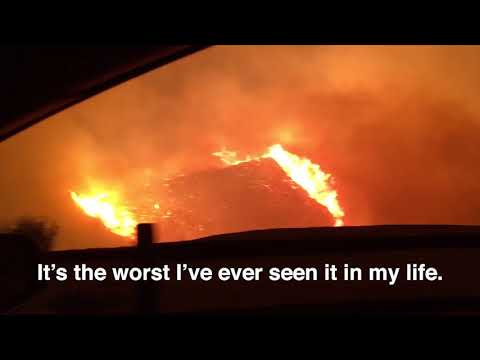
Watch this video on YouTube
Climate Change Caused the 2017 CA Wildfires – Clean Renewable Energy Now! – from 350.org
We learn to live with wildfire in the sage and oak woodlands, but the October fires in Santa Rosa illustrated that even urban neighborhoods could be torched en-masse from flaming embers set free in hurricane-force winds. Norm Miller, who’s been modeling these winds on computers at Lawrence Livermore National Lab at Berkeley, finds with a warming climate and shifting weather patterns, that high season for hot winds has stretched out, with more Santa Anas overlapping with the dry season. What does that mean? “Chances of fire are much greater,” said Miller.
53 families lost their homes at the Hawaiian Village apartments in Ventura, just a snapshot of the 1,271 destroyed structures in December’s 22 wildfires across Southern California. Most damaging of all, the Thomas Fire has charred 250,000 acres, including two of my former residences in the Upper Ojai Valley. Only 35 percent contained in its second week, with a renewed vigor it now rages toward a parched Santa Barbara, reducing many places we love to black soot. Five more of the December fires have caused widespread evacuations and property losses, burning parts of Los Angeles, Riverside, Orange and San Diego Counties.
Another recent study by Lawrence Livermore showed Arctic Sea ice loss will continue to dry out California, by developing an atmospheric ridge that steers rainfall to the north, leaving us more and more drought-stricken. By the end of the 21st century, scientists predict that more than 60 percent of the Earth’s land will be more vulnerable to wildfire than it is today, mostly in mid-to-high latitudes like the Western US.
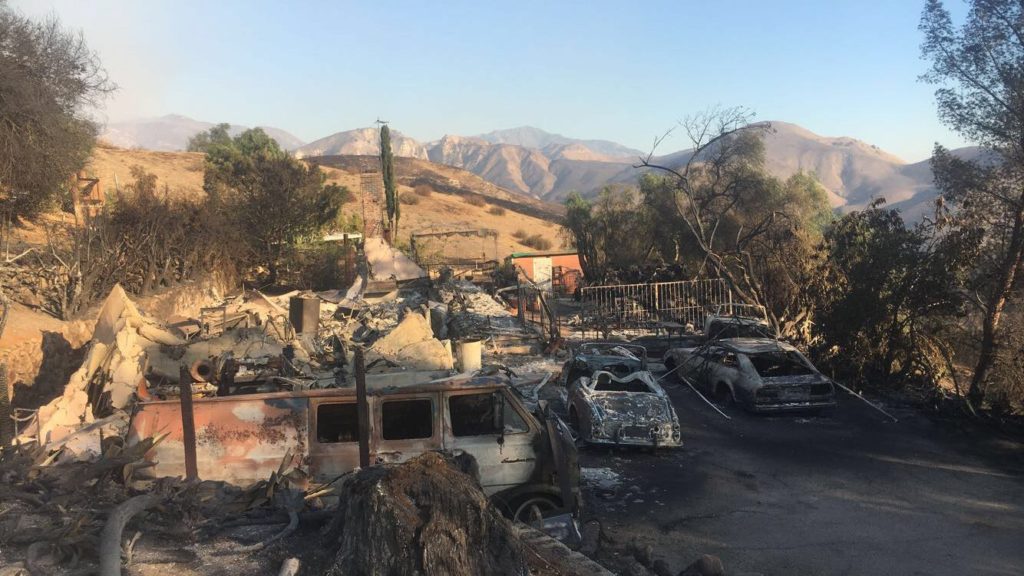

Taking Action Against Climate Insanity
First, to solve the ever-worsening climate crisis, we must reduce our dependence on fossil fuels and stop our politicians from approving all new fossil fuel projects—from extreme drilling fields to tar sands crude oil pipelines to refinery expansions. Self-proclaimed climate advocates like Governor Jerry Brown better get real about keeping the oil in the ground, stop enabling polluting drilling techniques like fracking, and put an end to the giveaways to Big Oil and Gas.
Case in point of the problem with Brown: his business-as-usual Cap and Trade extension. Dreamed up by the Western States Petroleum Association, it gives away free credits to polluters and allows the oil industry to expand indefinitely. It ties the hands of local air districts that regulate pollution, while assuring vulnerable communities near refineries will continue to breathe carcinogenic and asthma-inducing volatile organic compounds. Brown’s form of compromise, despite his public relations glad-handing, casts a smog-covered gloom over our ability to achieve ambitious targets for reducing carbon pollution.
California needs to first approve SB 100 in the next legislative session, which would move us toward 100 percent clean, renewable, carbon-free energy by 2045. Of course, we need a just transition that assures full employment right now, with people in my community stepping up to make that happen on many fronts. This week the LA City Council backed an effort to divest from Wells Fargo, one of the worst offenders financing massive fossil fuel infrastructure like the Dakota Access Pipeline. Furthermore, through a coalition of organizations including city leaders and Naomi Klein’s LEAP, we are devising a World War II-scale mobilization to solve the climate crisis, with system change through environmental justice as our rallying cry.
Let us remember, despite the dreaded winds of climate chaos, the people united will never be divided.
STORY: Dark Omen: Climate Chaos Converges with Solar Eclipse Wisdom
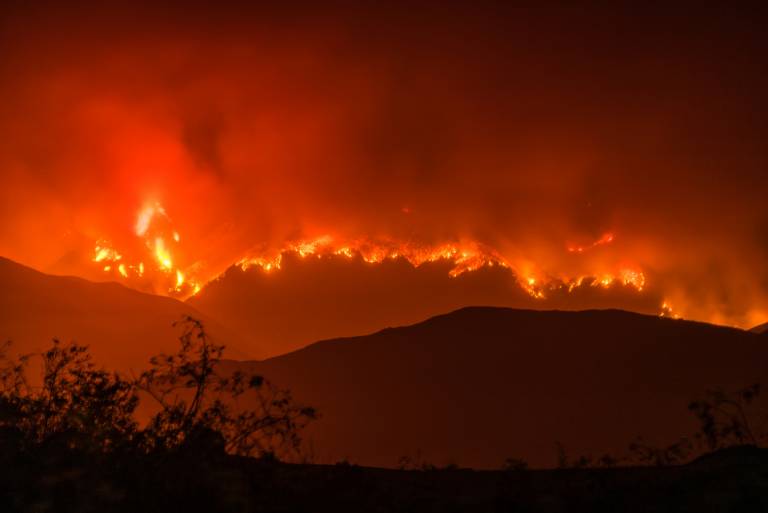

Building Resilience into our Communities
Okay, let us not forget: wrong-headed urban and regional planning, mixed with a heated climate and persistent drought, turned natural and inevitable wildfires into wholesale community destruction events. Why do real estate developers keep getting away with building in high fire hazard zones? Remember Mike Davis’ rejoinder in his quintessential Los Angeles polemical masterpiece Ecology of Fear: “The Case for Letting Malibu Burn.” While we don’t advocate anywhere should burn, we must recognize limits on the appropriate landscape to set up our television sets and shuffleboard courts, in favor of setting nature free from cul de sacs and paneled view homes.
Local governments must impose strict fire codes in new communities throughout California, require older communities to retrofit their properties, as well as ensure that urban infrastructure works. I have heard reports of firefighters encountering dry fire hydrants (often because of power outages) and melted plastic piping from water towers. What about the fact that faulty power lines contributed to both the Santa Rosa and Sylmar fires?
Moreover, we need evacuation plans in place at the community and personal level. California lacks a comprehensive system of warning, and emergency communication systems must be mandatory and focused to be effective.
We must assure our firefighters and National Guard are well-trained and -compensated—which also means putting an end to the injustice of paying prisoners only $2 a day to fight wildfires for brutal 24-hour shifts. The list could go on, and the discussion must continue.
We must also enforce proper defensible space regulations for property owners living on our wild edges. We don’t need reactive brush and forest clearance programs that agencies seem to love. Defensible space of 100 feet of thinned vegetation should be required, not tree clear-cutting and brush-habitat denuding that evicts beetles and bobcats, and transforms natural water flow into a vehicle for erosion. Moreover, hundreds of feet of bare ground make a home the target for wind-driven embers. Such policies would cost significantly less than the tens-of-billions of wildfire-related claims already submitted statewide.
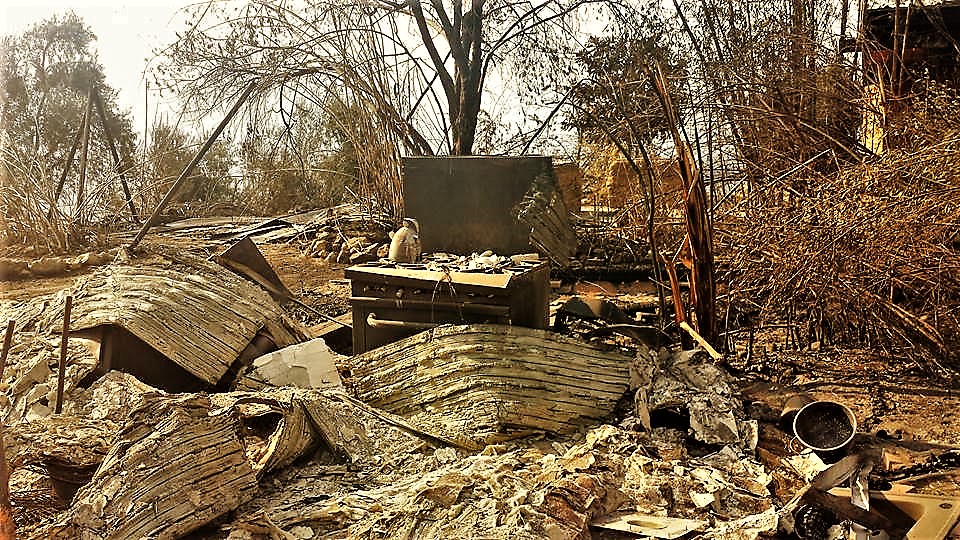

The Way Forward
Our new normal includes people displaced by climate disasters dealing with post-traumatic stress living among us, as we smolder into this uncertain future with a national government pushing policies that will only further escalate this crisis.
Yet people have been coming together, opening their doors to evacuees, attending community gatherings, and figuring out how to collaborate in times of crisis. Yes, the dreaded Santa Anas continue to blow with not a drop of rain forecast. We will need to unite further to overcome the many obstacles, to protect our communities and the planet. See you out there…
Jack Eidt is a novelist, urban planner, and environmental advocate who lives in Los Angeles, California. He is an organizer with SoCal350 and founder of WilderUtopia.com.
Updated 10 January 2025

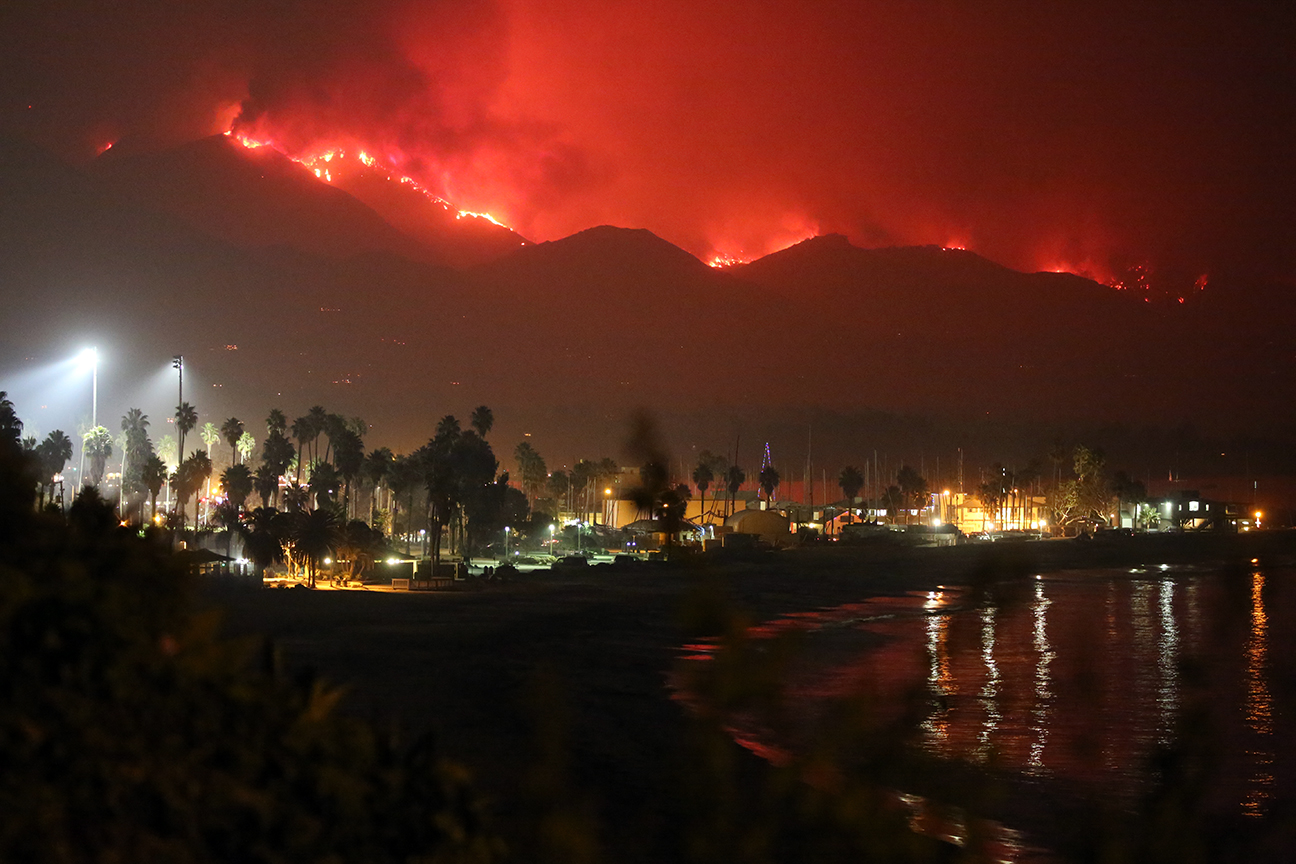


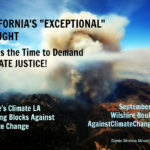
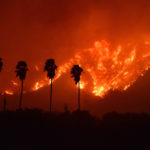
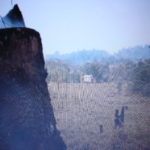
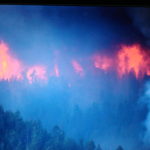






Pingback: Wildfire Risk: Retrofit Communities, Not Forests | WilderUtopia.com
Pingback: My Wildfire-Appropriate Retrofit Journey - Pt I | WilderUtopia.com
Pingback: Dark Omen: Climate Chaos Converges with Solar Eclipse Wisdom